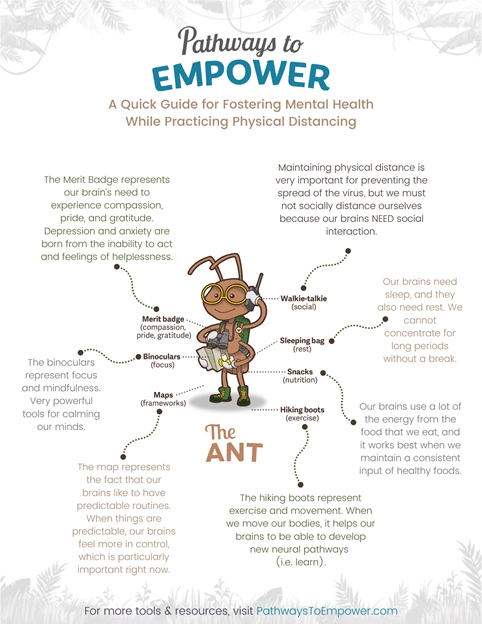
A New Kind of Mental Health Awareness: Fostering Mental Health While Practicing Physical Distancing
Last week, I was reading a news story about a group of teenagers from New Zealand who were stranded in the Caribbean at the beginning of the pandemic, having just completed a study-abroad sailing program. The educators in charge decided that the best course of action was to sail back to New Zealand with the teens, where they landed this week. The group has been practicing their version of quarantine, but as they arrived, they were shocked at the changes that had taken place while they were away.
In many ways, the world has been turned upside-down. So much of what we took for granted has changed, and we are all adjusting to our new reality. There are things for which we are grateful, such as family dinners and quality time, without having to run from activity-to-activity. Some things are difficult, such as motivating kids for online learning and juggling additional responsibilities. As parents, our lives can sometimes feel like we are working triage—putting out one fire before moving on to the next.
At this moment, however, it is more critical than ever that we begin to recognize how important it is to foster mental health proactively. Most people feel pretty confident that they understand the keys to physical health, but most of us were not given much information about mental health. Interestingly, that was about to change. In response to the growing mental health issues among children and young adults, states had just begun to require schools to teach mental health literacy. Unfortunately, that has been sidelined as administrators and teachers struggle to adjust to online learning.
May is Mental Health Awareness Month, which gives us the perfect opportunity to get back on track. I love to say that mental health is brain health, so to foster mental health, we need to start by understanding our brains. The thing is, that doesn’t need to be difficult. We created a model to help people understand the brain science, and it is pretty simple. Here is one small piece of the model that we used to create a quick guide for how to foster mental health while practicing physical distancing. The ant is carrying the tools of a healthy brain, so while we are all in quarantine, we need to remember to find ways to make sure that our brains have those tools in place.

There are a lot of things that have changed in the last several weeks. However, basic brain science, and the fundamentals of mental health, have not. As you may have seen in the news, this pandemic has the potential for a significant increase in mental health issues. But just like boosting our immune systems helps our body fight the virus, boosting our brain health can help prevent us from falling prey to those difficulties.
Each week, we release a new free quick guide and follow-up with a free Zoom chat on Thursday evening. Throughout May, we are also highlighting stories about how people are fostering mental health. So please join us. Let’s make it a new trend to #fostermentalhealth.


